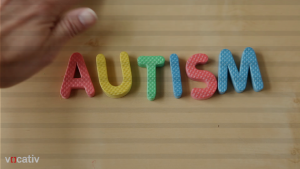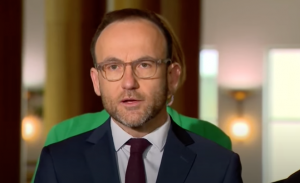Australia in the grip of an epidemic of autism


More children are being branded autistic as schools scramble for funding google_ad_section_end(name=story_introduction)
THE nation is in the grip of an epidemic of autism, with at least one state reporting an incidence as high as one child in 50. But a growing number of medicos, parents and politicians are questioning the validity of the diagnosis, arguing that many children are being labelled for life with a disability they simply don’t have in the pursuit of extra education funding.
Mick O’Keeffe is passionate about helping children with learning difficulties and as a developmental pediatrician he knows early intervention can turn around young lives around. But in his home state, Queensland, a diagnosis-based funding arrangement with the state Department of Education and Training means every week parents knock on his Brisbane surgery door begging for their child to be diagnosed with autism, even if he knows they are not autistic.
It is the reason, he says, the rate of autism spectrum disorder in Queensland is officially one in 50 children.
“There’s no reason Queensland should have three times the rate [of] the rest of the world or any other state in Australia,” he says. “It is being driven by diagnosis-based funding models within the education system.”
Does that mean two-thirds of the children carrying the label are misdiagnosed? “Quite possibly, yes,” says O’Keeffe, who is a member of a group of private medical and education professionals called the Child Development Network.
Under the state’s funding model, certain conditions attract resources to a school to support the student. They include intellectual and physical impairment, speech and language difficulties and ASD.
Autism is a lifelong condition that affects a child’s development. Some children are gifted in one or two areas, but most of them have difficulty relating to others. At the severe end of the spectrum, some may never learn to talk. The accepted rate of ASD in the Western world is about one in 160.
Across town, in the surgery of Catherine Skellern, another Brisbane-based developmental pediatrician with the Child Development Network, a parent is telling her the guidance officer from the southern Brisbane school her young son attends disagrees with the diagnosis Skellern has given the five-year-old.
“I diagnosed the boy with attention deficit hyperactivity disorder and the school told this mother they could not help the child unless she came back to me for a diagnosis of autism,” says Skellern, adding ADHD does not attract funding.
“I’m so angry. They are blackmailing parents by saying: ‘We won’t help your child unless you get an autism diagnosis.’ “
In Queensland it’s a case of where there is a dollar, there is a diagnosis, according to O’Keeffe. Despite the high levels of ASD in the Sunshine State, there’s not a single case of oppositional defiant disorder in Queensland schools. ODD is marked by a child’s ongoing pattern of disobedient, hostile and defiant behaviour towards authority figures that goes beyond the bounds of normal childhood behaviour. It exists south of the border in NSW because the disorder is recognised and funded in schools.
“It doesn’t attract funding, so it doesn’t exist in Queensland schools,” O’Keeffe says.
Teacher representatives and the DET deny that teachers would see themselves as having a role in diagnosis. Queensland Teachers Union president Steve Ryan disagrees that teachers pressure parents over diagnoses but he agrees desperation for funding is at an all-time high.
“In the area of special needs, schools and teacher are desperately underfunded. Desperate is a polite term and the only way many schools operate is by relying on the goodwill of the teachers,” he says.
Patrea Walton, assistant director-general of student services for the DET, says teachers do not diagnose students and she turns the spotlight back on to doctors. “The department does not diagnose ASD, therefore it is the individual medical specialist’s responsibility to adhere to the professional standards of the Medical Board of Queensland and their professional organisations in making diagnoses,” Walton says.
A DET working party reviewed the disability category of ASD in 2008 and recommended the criteria of accepting diagnoses from pediatricians, psychiatrists and neurologists be maintained. Walton says it also recommended a two-year trial of a needs-based model of funding, which has just begun in six primary schools.
“It focuses on all students from prep to Year 3 to identify and provide early assistance to those with additional educational needs without the prior need for a diagnosis of a disability,” Walton says.
Funding for autism in Queensland schools was championed by state Labor MP Dean Wells a decade ago, when he was the minister for education in the Goss government. He knew early intervention could change young lives, but he is now the most vocal critic of the scheme he created.
“I had my heart in the right place. It never occurred to me it would become a gigantic rort,” Wells tells Inquirer.
As the architect of the scheme, he feels a great sense of responsibility and disappointment. Many children who do not have autism have been labelled for life.
“It’s a mass defamation of an innocent generation,” he says. “It’s appalling. It is driven by the fact that to get resources out of the Department of Education you need to get a diagnosis.”
According to Queensland DET figures on state school funding, there is $510.9 million available this financial year to support students with disabilities with specialist teachers, therapists and teacher’s aides.
Skellern’s research in 2005 revealed 58 per cent of doctors admitted they had ticked the box for autism when they were unsure the diagnosis was correct.
They also admitted to exaggerating children’s symptoms to obtain a diagnosis. It is something she resists, but it’s the child who pays the price.
“Other students with learning difficulties fall outside the funding categories, so schools say: ‘We know the child has a problem but without funding we can’t help unless they obtain a diagnosis,’ ” Skellern says.
“I don’t think anyone appreciates the downstream effects on children labelled with something they probably don’t have and how people will treat them as a result.”
In May last year O’Keeffe received a call from a nearby school in Brisbane’s northwest about a five-year-old prep student who was already a patient of his. Ben’s parents were desperate to get their son help. He was a little quirky; he liked to line his toys up, was repetitive in his play and, according to his teachers, “not developing normally”. The school wanted the boy diagnosed with ASD so it could obtain funding, but O’Keeffe did not believe the boy was autistic.
“The school contacted me directly and the teacher said, ‘You know if we get a diagnosis he can get some funding,’ ” O’Keeffe says.
“It makes me angry but it’s not the people, it’s the system. They are all trying to do the right thing by the kids.”
Ben’s parents, who prefer not to be named to protect their son, were devastated when they could not get the desired diagnosis.
“We begged for a diagnosis because without it we wouldn’t get any help. I was in tears that the doctor wouldn’t give me one,” Ben’s mother tells Inquirer.
The pressure from the school was extraordinary. “We got a letter telling us what was wrong with our child and to go further with our doctor,” Ben’s father says. Adds Ben’s mother: “The impression we got was it was all about the money, that without a diagnosis they would not be willing and unable to provide for Ben’s needs.”
O’Keeffe suggested Ben be given time to develop, to wait and see because he was only five.
Some of Ben’s quirkiness has flavours of autism but a lot of common childhood behaviours tick the boxes of the diagnostic list known as the Diagnostic and Statistical Manual of Mental Disorders, or the DSM-4, published by the American Psychiatric Association. It is a subjective list dependent on the skill of the doctor to ascertain a disorder. The DSM-4 has been criticised by child experts in the US, where the over-medicalisation of normal childhood development is a contentious issue.
“Six of nine subjective criteria and you have X disorder, five of nine and you do not,” wrote Neil Schechter, a developmental-behavioural pediatrician and the former head of developmental and behavioural pediatrics at the University of Connecticut school of medicine in the Journal of Developmental and Behavioural Pediatrics in 2008. “[Including] annoying or imperfect behaviours trivialises those individuals who are truly compromised by these symptoms. They are lost in a vast sea of mildly impulsive or inattentive children characterised as having ADHD, irritable children characterised as having bipolar disorder and shy children characterised as having Asperger’s syndrome [a form of autism].”
In an interview with Inquirer, Schechter says Western societies in general are becoming increasingly intolerant to differences between children and putting “pressure on the medical community to ‘do something’ “.
“Such thinking has led to pathologising behaviours that in the past would have been considered within the range of normal,” he says.
Ben could have been one of those children labelled for life but now aged six and in Grade 1, he is what his parents call “embarrassingly normal”. He did have difficulties and the family sought fortnightly help from a psychologist to iron out Ben’s problems, one of which turned out to be anxiety.
“We used our own money and worked with him daily and now he’s considered totally normal and mainstream,” Ben’s mother says.
Educators argue the present school system is underfunded but also agree with Schechter that schools are becoming less tolerant of normal behaviour.
“It’s true we have an absolute intolerance for quirky behaviour now,” says Lorelei Carpenter, a senior lecturer at Griffith University’s school of education whose book, Motherhood in the Margins, looks at the experience of mothers caring for children with disabilities such as ADHD and autism.
“Asperger’s is the new term of eccentricity,” she says of the milder end of the autism spectrum.
“Before Asperger’s was discovered we referred to these kids as eccentric. It was OK but now a medicalised label makes it a disorder, it pathologises it.”
Carpenter says she witnessed the changes a decade ago when autism qualified for educational assistance.
“Mothers whose children had been diagnosed with ADHD went back to their pediatricians and all of a sudden they had a child with autism because ADHD was not being funded, and that’s when the misdiagnosis started.”
Doctors are misdiagnosing children on purpose, but O’Keeffe says the system is forcing many of his colleagues to be pragmatic.
“A kid has needs and you do whatever you can to help the child have a better future. And if the choice is nothing or extra funding, well, I try not to, but it has happened with me,” he says.
In NSW, where the state government spent more than $1 billion on students with disabilities in the past financial year, children are also in danger of being diagnosed with “things they don’t have”, according to Macquarie University research fellow Linda Graham.
“We are seeing an increase in the categorisation of students, not an actual increase in disability,” Graham says.
“Once upon a time ADHD was the in-vogue diagnosis but it doesn’t tick the right boxes in terms of education department funding.”
The figures tell an alarming story. Autism rates skyrocketed 280 per cent in the 10 years from 1997.
Graham’s research, to be published later this year, analysed NSW Treasury documents, which revealed that, in 2002-03, 6183 children in state schools were diagnosed with a disability that qualified for special education funding: a leap of 41 per cent on the previous year. NSW boys are also over-represented as autistic. Her research puts the rate at nine boys to one girl, yet the accepted international rate is four boys to one girl.
“I think parents are being manipulated. I want them to start questioning this . . . because teachers are not developmental pediatricians,” Graham says.
Children who would once have been accepted as late bloomers or a little eccentric are being diagnosed as autistic, she says. “Because this is happening it leaves less and less funding for children truly compromised by autism,” Graham says.
For children who are genuinely autistic, the system works extremely well.
Cyra Fisher took her son Cooper to a pediatrician at age three for an unrelated matter but the doctor picked up on his quirks. His speech was delayed, he lined up his toys, he had problems interacting and there were other pointers.
“He knew lots of words but couldn’t put a sentence together. They tested him and he ticked all the boxes,” says Fisher.
Cooper, now six, is in kindergarten at a small school in Byron Bay on the NSW north coast. He is academically gifted but is easily overwhelmed in big groups.
A teacher’s aide helps him for five to six hours a week, also assisting with his social skills in the playground. According to his mother, it has turned around his life. “He’s got his quirks but he’ll have a normal life,” Fisher says.
“Money intended for these kids should not be dished out elsewhere, that’s not right.”
Rosemary Cowen describes her son as a bit of a dreamer. “In preschool they said to me he was not quite with it, not attentive and had some issues with language,” she says. “But then in kindy it snowballed and in Year 1, when he was expected to sit for long periods of time, he had problems sitting.”
Cowan had her child assessed and found he had sensory and auditory processing issues, which she sought therapy for, but these assessments did not attract funding for the school in northwest Sydney. “The teacher just came out and said to me, ‘He’s autistic’, and it was so unprofessional,” she says. “There was no way my son had autism. He had too many friends; everyone said all the kids loved him. He had lots of social skills.” Cowan is a trained teacher and has since taken her son out of the public system in disgust. “The whole thing was about funding: get a diagnosis to get funding.”
At the opposite end of the spectrum, parents in Victoria whose children have been diagnosed with autism have had their funding cut. About 40 parents, including Melody Lind, a mother of two from Mentone, are planning to sue the state Department of Education and Early Childhood Development under the anti-discrimination act.
“Cody was diagnosed at five with high-functioning Asperger’s, but because his speech is advanced he doesn’t meet the criteria,” Lind says. “Socially, his behaviour is shocking, though . . . he is like a train and has the potential to derail constantly.”
More than 4000 autistic students receive about $84m a year, according to Victorian Education Department data. However, although funding has doubled since 2006-07, the criteria that children must meet have been narrowed, making fewer eligible for support.
To many, it is the medical label itself that is the root of the problem. Skellern points out that many children experience learning difficulties for myriad reasons, including shocking domestic circumstances, and they deserve help too.
“These children could do better but they don’t fit into any medical criteria,” she says.
Wells suggests Australia look to New Zealand, where a verification system is in place for children needing assistance.
“In New Zealand, a teacher says this child is difficult to teach, for whatever reason, it is verified without a medical diagnosis and assistance is rendered. They don’t have kids labelled.”
Source








